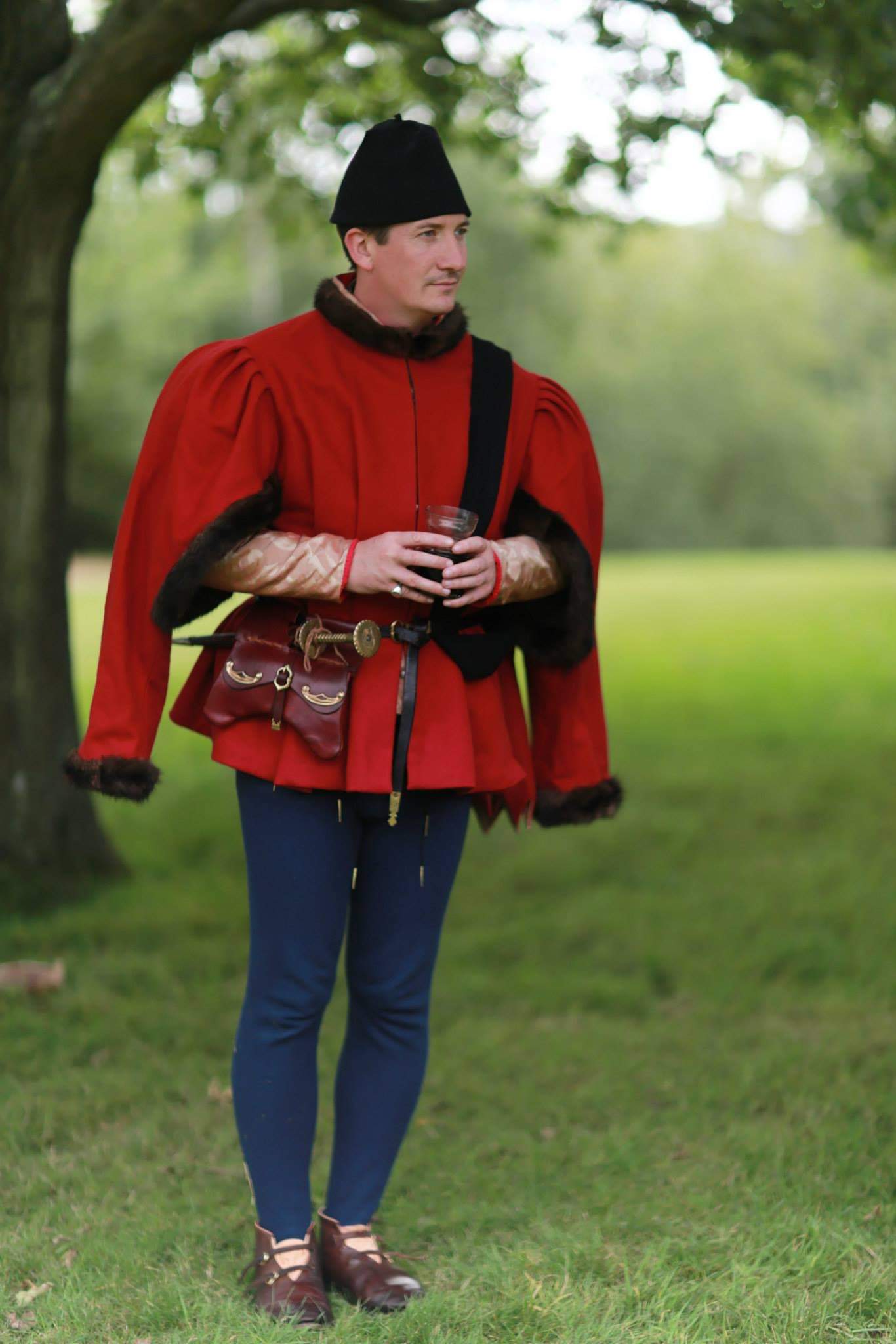
15th Century Linen Medieval Kirtle Peasant or Townswoman Etsy 15th century fashion, Medieval
Starting from medieval fashion ending at the swinging sixties, this section covers British fashion from the Normans through medieval and middle ages to the end of the 15th century. Day Clothes about 1050 This man and woman (left) date from about 1050, just before the Norman Conquest in 1066.

15th century example of a gown. Medieval fashion, 15th century fashion, Medieval dress
In the late medieval period (14th to 15th century), clothing styles continued to evolve. Hose remained popular, and men also began wearing doublets, which were close-fitting jackets. Cloaks and hoods were commonly worn for outdoor activities. At the same time, women's fashion featured more extravagant and voluminous styles.

Stock Photo 15th Century XV English costume of the Nobility 15th century clothing, 15th
English Medieval Clothing, c. 1200 CE Albert Kretschmer (Public Domain) Materials & Colours Clothes were generally the same for all classes but with the important difference of extra decoration, more and finer materials used, and an improved cut for the wealthier.

Italy 1516 cen. Renaissance Mode, Italian Renaissance Dress, Costume Renaissance, Renaissance
Fashion in 15th century Europe was characterised by a series of extremes and extravagances, from the voluminous dresses, the houppelandes with their curved floor-length sleeves to the revealing pantyhose of the Italian Renaissance. Hats, hoods and other headgear grew in importance and were adorned, draped, decorated and feathered.

15 cen Woman "Robe" dress, Central Europe (Burgundy) Historical dresses, Medieval dress
British Costume Fashion through the Ages - Part One. 1050 to 1490: 11th to 15th century, including the Wars of the Roses. British Costume Fashion through the Ages - Part Two. 16th and 17th centuries: Tudors and Stuarts and the English Civil War. British Costume Fashion through the Ages - Part Three.

Angele Plaisance/Diane Lynn in 15th century French working class gown. The gown is Dupioni silk
Men's attire in the 15th century was created to fit the masculine physique and indicate social position and employment. Understanding the basic elements of this clothing is crucial for those interested in recreating historical fashion. The doublet was one of the most prevalent clothing worn by males during this period.

15th Century at Cloak’d and Dagger’d
Fashion in 15th-century Europe was characterized by a series of extremes and extravagances, from the voluminous robes called houppelandes with their sweeping floor-length sleeves to the revealing doublets and hose of Renaissance Italy. Hats, hoods, and other headdresses assumed increasing importance, and were draped, jeweled, and feathered .

Medieval clothing, 15th century clothing, Historical clothing
Medieval Clothing Medieval Clothing Learn about the Medieval Clothes that were worn during the entire Medieval Period. Discover the Medieval Clothing Worn by Royalty, Nobility, Clergy, Peasants & Much More! Anglo Saxon Clothing

15th century working class woman 15th century clothing, Medieval clothing, Century clothing
1410-1419 1420-1429 1430-1439 1440-1449 1450-1459 1460-1469 1470-1479 1480-1489 1490-1499 Filmography Have a film to suggest that you don't see here? Contact us! Fifteenth Century Benigni, Roberto, and Massimo Troisi. Nothing Left to Do but Cry, 1984. http://www.imdb.com/title/tt0087814/.

German fashion in the 15th century. Men's Dress. Costume History
The fifteenth century saw transformations in the nature of costume and culture that are key to our understanding of Western fashion. Up until the fifteenth century, the clothing customs of most cultures had been determined by tradition, the availability of certain kinds of fabric, and the skill of the tailor.

Reversible Medieval dress, Burgundian, 15th Century Medieval dress, Dresses, 15th century dress
Detail from Très Riches Heures du Duc de Berry. Fashion in the 15th century, in Europe was characterized by a series of extremes and extravagances, from the voluminous gowns called houppelandes with their sweeping floor-length sleeves to the revealing doublets and hose of Renaissance Italy. Hats, hoods, and other headdresses assumed increasing.

15th century 15th century clothing, Medieval clothing, Historical clothing
The front was also cut very wide, but instead of being gathered in pleats it was heavily padded. German Men`s dress 15th century. Toward the middle of the 15th century the sleeve-holes of the jacket were very wide (Fig. 219), and the sleeves, which were not very wide, were cut to fit these wide sleeve-holes (Fig. 220).

15th century dress with silk sleeves, worn with a buttoned hood . Medeltidsveckan , Visby
Styles of the first two decades were a development and expansion of the Italian modes of the late 15th century. Young men wore white silk shirts, frilled and embroidered at the neck and wrists. Over this they wore an abbreviated tunic and close-fitting hose, which were often striped to delineate the masculine limbs.

15th Century Italian Gownby Sphinxfeather Renaissance gown, Renaissance dresses, 15th century
English medieval clothing The Medieval period in England is usually classified as the time between the fall of the Roman Empire to the beginning of the Renaissance, roughly the years AD 410-1485.

Medieval nobilty fashion in 1450, 15th century. Costume History
1550-1600 in European fashion English opulence, Italian reticella lace ruff, (possibly) Polish ornamentation, a French farthingale, and Spanish severity: The "Ermine Portrait" of Elizabeth I Fashion in the period 1550-1600 in European clothing was characterized by increased opulence.

15th Century Burgundian Gown at Cloak’d and Dagger’d 15th century dress, Sca dress, Medieval dress
As prosperity grew in the 15th century, the urban middle classes, including skilled workers, began to wear more complex clothes that followed, at a distance, the fashions set by the elites.. By the first half of the 16th century, the clothing of the Low Countries, German states, and Scandinavia had developed in a different direction than.